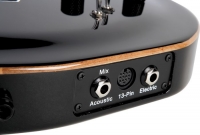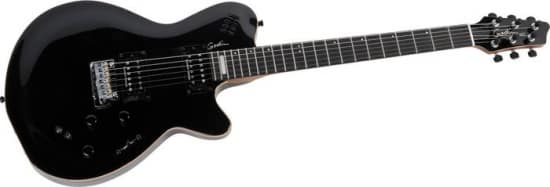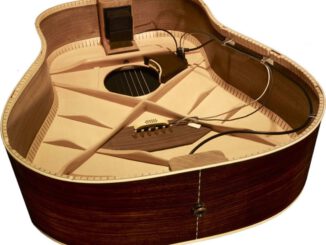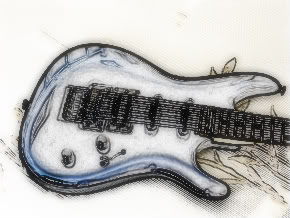While the massive guitar superpowers engage in a high-profile battle for world domination, it’s easy to overlook the fact that there are hundreds of smaller manufactures making their own equally important contributions to the world of electric guitar. Perhaps because their products don’t have to sell by the gazillion, these companies can afford to create more specialized—and even quirky—instruments that incorporate usual materials and have far-out finishes and daring designs that speak to the needs of flashy individualists, vintage, zealots and hellbent rabble-rousers.
This month’s assemblage of manufactures embodies the intrepid spirit that keeps the world of guitar fresh and vibrant—Ampeg’s faithful reissues of their Dan Armstrong acrylic guitars appear as bold today as they did several decades ago—and remind us all the craftsmanship stripped of conformity can yield glorious results. Viva la difference!
Godin LGXT
Godin’s electric and electric acoustic guitars are a first-rate example of the ingenuity and advanced thinking that typically emanate from the hotbeds of small guitar manufactures. The Canada-based luthier emerged in the Eighties as a builder of replacement necks and bodies for the electric market. Since then, Godin has put their expertise and subcontractors to the biggest guitar companies to use their own line of instruments. The Godin LGXT shows how far the company has quickly progressed, not only in their impeccable construction but in their advanced electronics as well.
The LGXT features a light maple body capped with carved hard maple for improved response. Our model was beautifully finished in a flattering high-gloss black, which echoed by the headstock’s black-trimmed locking machines. The slim and silky 22-fret mahogany neck is capped with an ebony fingerboard, and the plateless, four-bolt joint fits deep into the sleek rear contours of the arch-top body for maximum energy transfer. Typically of Godin’s electric guitars, the LGXT is idiosyncratically acoustic in its feel and tone. The guitar has a vibrant and clean playability, and there is a satisfying resonant snap and jangle in its tone rather than the high-action bark and buzz typical of electric guitars.
Where the LGXT breaks ground is in its electronics, which combine electric and acoustic sounds with guitar-synth tracking capabilities. The guitar’s electric output comes from two Seymour Duncan humbuckers with master volume and tone and a five-way selector that provides various humbucker/single-coil variations. The acoustic sounds and synth access are provided by custom L.R. Baggs undersaddle transducers located in the tremolo bridge and governed by a separate preamp (with volume, treble, mid and bass sliders) subtly mounted on the face of the upper bout.  A 13-pin output allows the bridge transducers to double as a hexaphonic pickup to power any of the Roland GR series and, in magnetic mode, VG-8 guitar-synth systems. And additional three-way switch allows you to select between magnetic and bridge pickups, synth only or everything at once.
A 13-pin output allows the bridge transducers to double as a hexaphonic pickup to power any of the Roland GR series and, in magnetic mode, VG-8 guitar-synth systems. And additional three-way switch allows you to select between magnetic and bridge pickups, synth only or everything at once.
The results of the techno-orgy is simply mindblowing: you can have, for example, fat, Duncan-powered rawk blowing from a Marshall Valvestate, reinforced with shimmering acoustic tone from a SWR Strawberry Blonde combo and pumped along by a Roland synth patches that offer anything from Hammond gloop to Bootsy bass. On their own, the electric and acoustic tones are superb, and the powerful on-board tone-shaping electronics allow a vast array of different sounds. With all systems “go,” this guitar could cut an entire album, form its own band or be the first object to give a Nobel Prize acceptance speech. Yes, it’s that good and that clever.






Be the first to comment